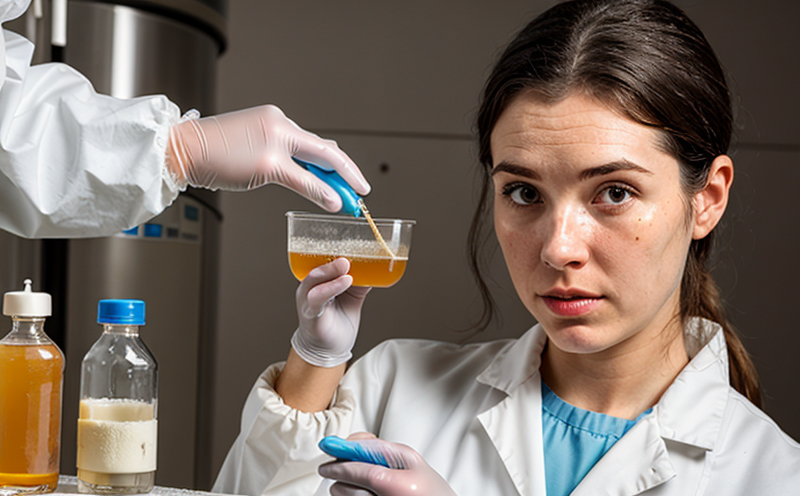ISO 16000-15 Enumeration of Mould Spores in Air
The ISO 16000-15 standard provides a method for the enumeration of mold spores present in air samples. This is critical for understanding and managing indoor air quality, especially in environments where microbial contamination can pose significant health risks to occupants.
This procedure is particularly relevant for sectors such as healthcare facilities, schools, offices, and residential buildings. It allows for accurate quantification of mold spore levels, which is essential for identifying potential sources of contamination and implementing effective control measures. The enumeration process involves the collection of air samples using a specific sampling device followed by analysis to count individual mold spores.
The standard specifies a range of parameters that must be adhered to ensure accurate results. These include:
- Sampling duration
- Type and size of the sampler used
- Environmental conditions during sampling (temperature, humidity)
- Storage and transport procedures for sampled air filters
- Sampling location within the building or facility
The methodology relies on the use of an impactor-type sampler to capture mold spores from the air onto a suitable substrate. The captured spores are then transferred to a counting medium, where they can be visualized and counted under a microscope.
Accurate enumeration is crucial for understanding indoor air quality and identifying potential sources of contamination. This information is vital for maintaining healthy environments in various settings, including hospitals, schools, and offices. The ability to accurately measure mold spore levels allows building managers and facility operators to take proactive measures to reduce exposure risks.
The standard also provides guidelines on how to interpret the results obtained from the enumeration process. It emphasizes the importance of comparing current air quality data with historical data or industry benchmarks to identify trends and potential issues.
Understanding mold spore levels is particularly important in environments where occupants are at higher risk, such as individuals with compromised immune systems or respiratory conditions. By accurately measuring and monitoring these levels, facilities can take steps to mitigate risks associated with microbial contamination.
Scope and Methodology
The ISO 16000-15 standard outlines a comprehensive approach for the enumeration of mold spores in air samples. It specifies the requirements for sampling, sample preparation, and analysis to ensure accurate and reliable results.
The scope includes:
- Identification of appropriate sampling devices
- Sampling duration and frequency
- Environmental conditions during sampling
- Sampling location within the facility
- Storage and transport procedures for sampled air filters
- Preparation of counting media
- Microscopic examination techniques
- Data interpretation guidelines
The methodology involves:
- Setting up sampling devices in designated areas within the facility
- Sampling over a specified duration while maintaining controlled environmental conditions
- Capturing air samples on suitable substrates using impactor-type samplers
- Transporting and storing sampled materials under appropriate conditions to prevent contamination or loss of viability
- Preparing counting media as per the standard specifications
- Visualizing and counting mold spores under a microscope
- Analyzing results to determine compliance with established standards or benchmarks
The standard ensures that all steps are conducted in a standardized manner, thereby providing consistent and comparable data across different facilities.
Accurate enumeration of mold spores is crucial for maintaining indoor air quality and identifying potential sources of contamination. This process helps facility managers make informed decisions about necessary control measures to protect occupant health and well-being.
Industry Applications
The ISO 16000-15 standard finds extensive application across various industries where indoor air quality is a critical concern. This includes:
- Hospitality and healthcare facilities, ensuring safe environments for patients and staff
- Schools and educational institutions, promoting health and wellness among students and faculty
- Offices and commercial buildings, enhancing productivity and comfort for employees
- Residential developments, providing healthy living spaces for occupants
In healthcare facilities, accurate enumeration of mold spores is essential to minimize the risk of airborne infections. In schools and educational institutions, it helps maintain a conducive learning environment free from microbial contamination. For offices and commercial buildings, this process ensures optimal working conditions by reducing exposure to potential allergens and irritants.
Residential developments benefit greatly from regular monitoring of indoor air quality using ISO 16000-15 methods. This ensures that homes meet strict health and safety standards, contributing to a higher quality of life for residents.
Use Cases and Application Examples
- Hospital Environments: Monitoring mold spore levels helps identify potential sources of airborne infections in hospitals, ensuring patient safety.
- Schools and Educational Institutions: Regular sampling provides insights into the air quality within classrooms and other facilities, promoting a healthier learning environment.
- Offices and Commercial Buildings: This process aids in maintaining optimal working conditions by reducing exposure to potential allergens and irritants.
- Residential Developments: Regular monitoring ensures homes meet strict health and safety standards, contributing to higher quality of life for residents.
- New Construction Projects: Pre-occupancy testing helps ensure that new buildings are free from excessive mold spore levels before occupancy.
- Retrofitting Existing Buildings: Post-renovation monitoring ensures that improvements have effectively reduced mold spore levels and improved indoor air quality.
- Indoor Air Quality Investigations: This process supports investigations into unexplained health symptoms or incidents within a facility, providing valuable data for diagnosis and remediation.
These use cases illustrate the versatility of ISO 16000-15 in various sectors, highlighting its importance in maintaining healthy indoor environments across different settings.





